As Maryland’s rural counties lose farmland, consider fracking and face economic challenges, the Capital News Service at the University of Maryland Philip Merrill College of Journalism presents a series examining the political divide between urban and rural parts of Maryland and the state of the economy in rural Maryland. This is the second part in a five-part series.
By J.F. Meils
Capital News Service
CUMBERLAND — Allegany and Garrett, the state’s two westernmost counties, tend to be lumped together as “Mountain Maryland,” their problems similar, their prospects equally muddled.
But the two counties’ economic issues — and their approaches to solving them — differ starkly.
In Allegany, many problems stem from the legacy of past reliance on “whales,” big employers with large numbers of good-paying jobs that lay waste to communities when they leave. In Garrett, a place that has always relied on natural resources to power its economy, the question is not whether to keep doing that, but how.
Small is beautiful
Kelly Springfield Tires, CORRECTION: Celanese Fiber Co., Pittsburgh Plate Glass — all were economic goliaths in Allegany County last century. And all left or downsized massively, wreaking havoc on an area whose economic lifeblood has long pumped through two ventricles: big manufacturers and coal.
The decline of both is still being felt.
According to 2015 U.S. Census estimates, Allegany has a median household income of just over $40,000, with 20% of its 70,000 residents living in poverty, making it the second-poorest county in Maryland, behind only Somerset on the Eastern Shore.
“We decided we weren’t going to be looking for large-employment companies anymore because when they move out, it’s a huge hit,” said County Commissioner William Valentine, R-Allegany.
The idea, according to Valentine, is to target companies that will hire, or grow to, about 200-300 employees.
Part of the strategy to attract businesses is construction of ready-made work space in the county’s industrial parks, lowering the expense, time and regulatory hassle of setting up in a new location. However, of Allegany’s seven commercial parks, only five are full or mostly so. And the county’s newest structure, a 40,000-square-foot shell building in Barton Business Park finished in 2016, sits empty.
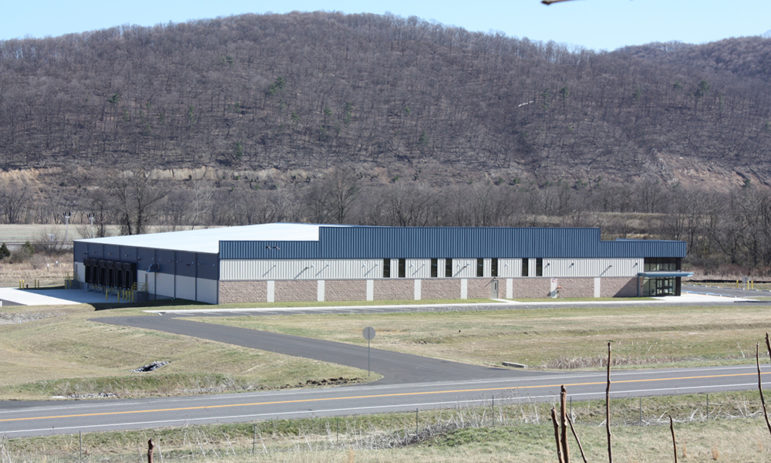
While most of Allegany County’s business parks are full or close to capacity, the new 40,000 sq. foot shell building in the Barton Business Park has yet to attract a tenant. Photo by J.F. Meils/Capital News Service via AP.
In a strange twist, there’s no dearth of jobs in Allegany. A recent search of all available jobs in the county on Maryland’s Workforce Exchange website returned more than 750 open positions.
So how does a place with 7 percent unemployment where one in five residents lives in poverty have hundreds of unfilled jobs?
The short answer: Most of the area’s new jobs don’t pay as much as the old ones because they tend to be in the service sector, and many don’t come with benefits.
According to the Maryland Department of Commerce, Allegany’s top five employers are Western Maryland Health System, the area’s two universities, Hunter Douglas and CSX Transportation — all of which are employers that tend to offer jobs with living wages and benefits.
Among the next 10 largest employers are Rocky Gap Casino Resort, Walmart, Giant supermarkets and McDonald’s — companies that typically offer seasonal or part-time jobs with lower wages and limited benefits.
Allegany is also home to two state prisons, the North Branch and Western Correctional Institutions. While contentious in the county, the prisons are an undeniable source of employment, providing more than 1,000 jobs according to the Maryland Department of Public Safety and Correctional Services.
They’re also funded $120 million, a portion of which ends up in the hands of local businesses that support peripheral prison operations and cater to correctional employees.
And though prisons might not be the side Allegany wants to show visitors, its biggest single tourist draw is DelFest, a four-day annual music festival that takes place right next to its correctional complex, at the county fairgrounds.
Medical marijuana could bring growth
Another hopeful source of revenue for Allegany is medical marijuana. The county already has agreements in place for a newly licensed dispensary and producer, according to Valentine. The county is also in discussions with Grow West MD, a medical marijuana grower that ran into resistance when it tried to set up shop next door in Garrett County.
Valentine doesn’t anticipate many jobs from the three potential medical marijuana operators coming to the county, maybe 50 positions combined. But ancillary businesses including records storage, equipment supply and shipping could mean another 200 or so jobs in an industry that seems likely to grow with time.
Coal industry shrinking
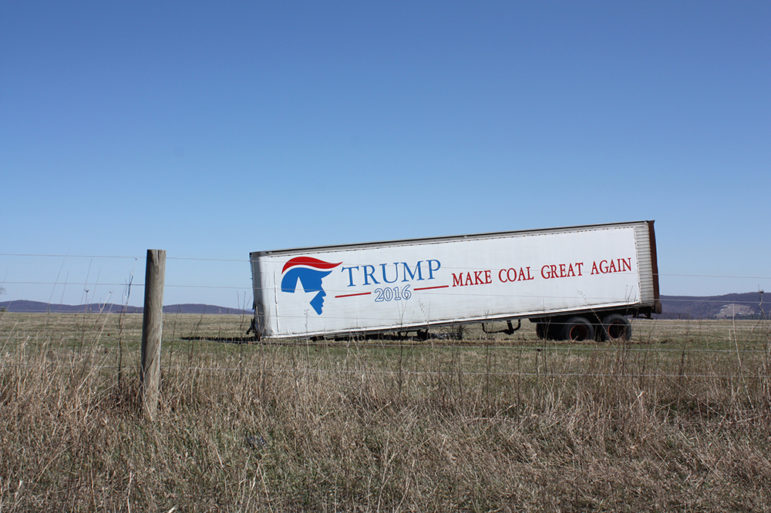
A pro-Trump trailer still sits alongside I-68 in Allegany County. Coal has been mined in Western Maryland since the late 1800s, but few believe the area’s economic future lies in mining. Photo by J.F. Meils/Capital News Service via AP.
The final piece in Allegany’s economic puzzle and, tellingly, the one that usually comes up last in discussions about the county’s future, is coal.
According to the 2013 report by the Maryland Bureau of Mines, the most recent available, Allegany produced about 930,000 tons of coal and employed 227 people. In 1907, when coal production peaked in Allegany, more than 5,700 people were employed in the local coal industry, which produced 4.5 million tons that year.
“Coal is not as important, that’s a fact,” said Sen. George Edwards, R-Garrett, Allegany, Washington. “But it’s still an important part from the standpoint that it does employ people and it does pay good wages and benefits and contributes to the economy.”
But less and less going back decades — a boom whose bust will probably still be felt years from now.
Fracking and tourism face off
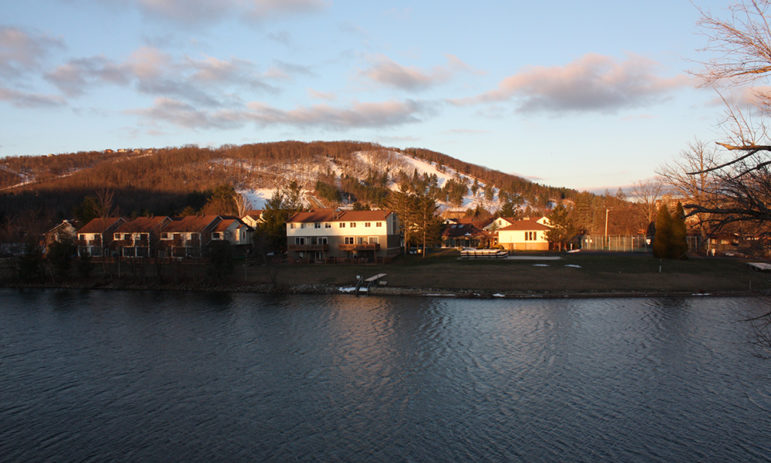
A view of Wisp Resort near the northern tip of Deep Creek Lake in Garrett County in Western Maryland. Photo by J.F. Meils/Capital News Service via AP.
Garrett, Maryland’s westernmost county, is beautiful and remote and people there treasure it for both those qualities. But Maryland’s expiring moratorium on hydraulic fracturing, or fracking, brought out the ugly in Garrett.
“I can say unequivocally this is the most controversial issue we’ve ever dealt with,” said County Commissioner Paul Edwards, R-Garrett, who is the son of Sen. George Edwards, before Gov. Larry Hogan announced his support for a statewide fracking ban on March 17.
According to a September 2016 OpinionWorks survey commissioned by the Chesapeake Climate Action Network, 56 percent of Garrett County residents were in favor of a fracking ban with 28 percent opposed and 15 percent unsure.
Hogan, whose 2014 election was made possible in part by rural voters, was formerly in favor of fracking, saying in an October 2016 meeting with the Baltimore Sun’s editorial board that the state was sitting on a “goldmine” of natural gas in Western Maryland.
By passing a ban in Maryland, “We’re just deciding to do hydraulic fracturing in other states,” said Billy Bishoff, president of Garrett County’s Farm Bureau and an outspoken supporter of fracking.

Two generations of Bishoffs on their family farm near Friendsville in Garrett County in Western Maryland. Billy (far right) is the president of the Garrett County Farm Bureau and was for fracking. Photo by J.F. Meils/Capital News Service via AP.
Farmers like Bishoff are feeling the squeeze from the rise in property prices around Deep Creek Lake, a major economic engine for the county. Fracking could help farmers produce income to keep up with rising property taxes, he said, driven by the rise in property prices.
The “lake people,” as they’re sometimes called, don’t use many county resources, including schools, which makes them particularly valuable to Garrett’s budget. And while second-home owners were not very engaged in the recent fracking battle, the businesses that depend on them were.
“This county needs something more than tourism,” said Steve Green, owner of High Mountain Sports, whose store is on Deep Creek Lake. “But if you bring in fracking, it’s going to destroy or significantly disable tourism, so you’re worse off than when you started.”
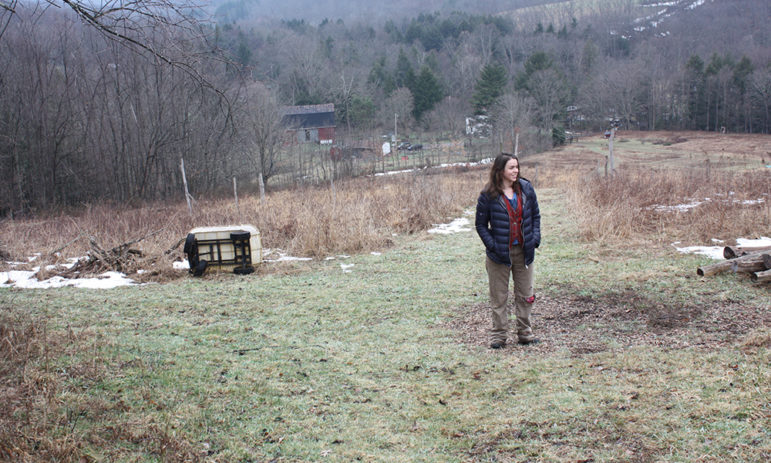
Farmer and anti-fracking activist Kim Alexander on her farm near Friendsville, Maryland. “Economy and ecology go hand in hand,” said Alexander. Photo by J.F. Meils/Capital News Service via AP.
Some argue that relative size of Garrett’s tourist industry is not quite equal to its outsized influence in the county.
“Leisure and hospitality represent the second-biggest percentage of our labor force, but the sixth-biggest income producer,” said Alex McCoy, head of economic development for Garrett County. “That’s because the average weekly wage for (tourism) is low.”
For those who organized locally against fracking, including Engage Mountain Maryland and Citizen Shale, the issue was much more than economic.
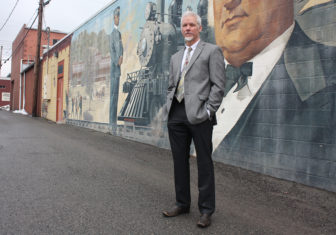
Mark Stutzman, illustrator and president of Engage Mountain Maryland, an anti-fracking group, stands in front of a mural he painted in Oakland, Maryland. Photo by J.F. Meils/Capital News Service via AP.
“The real problem was that our local government considered fracking an option,” said Mark Stutzman, president and co-founder of Engage Mountain Maryland. “They didn’t have the wherewithal, the logic, to look at the issue from a fact-based perspective to say this does not work for our area. What we have here is already working.”
Stutzman’s sentiment was not shared by many of Garrett’s politicians.
Sen. Edwards, who has represented Western Maryland in Annapolis as a delegate or senator for 34 years, was for fracking, as were just about all the county commissioners from Garrett and Allegany.
“We’re not gonna try to do something that knowingly damages the environment where we live,” Edwards said, before Hogan’s announcement.
$88 billion in natural gas
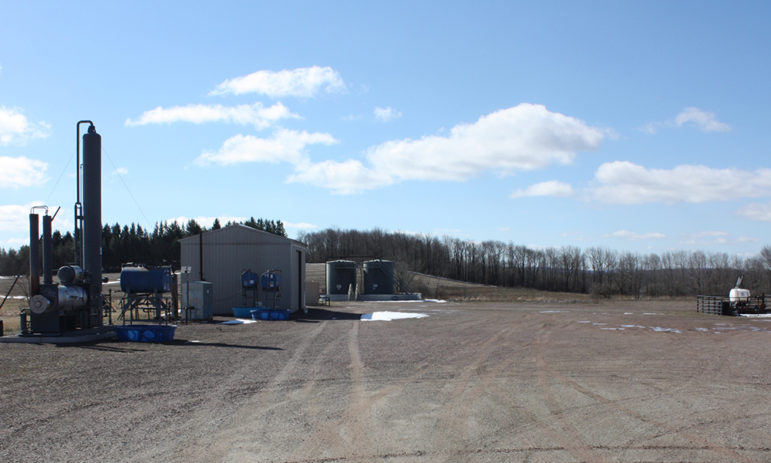
A fracking site near Berlin, Pennsylvania, just over the northern border of Garrett County. The site is small but still produces about 50,000 cubic feet of natural gas a day. Photo by J.F. Meils/Capital News Service via AP.
According to the Maryland Department of Natural Resources, all of Garrett sits on the gas-rich Marcellus shale. Despite being on the “fairway” in extraction terms, the amount of natural gas that could be pulled from the entirety of Western Maryland is thought to be just over 1 percent of the total gas locked in the Marcellus, per the U.S. Geological Survey.
The amount is still significant, about 629 billion cubic feet of “recoverable” natural gas in Garrett alone, according to a 2010 assessment by U.S. Energy Information Administration. That translates to about $88 billion, at current rates.
Besides tourism and harvesting the area’s resources, Garrett doesn’t have a lot of options. Like Allegany, it fell victim to “whales,” the most recent of which was Bausch + Lomb, which closed its plant in Oakland, the county seat, in 1996, laying off about 600 people and sucking the economic air out of the county for years to come.



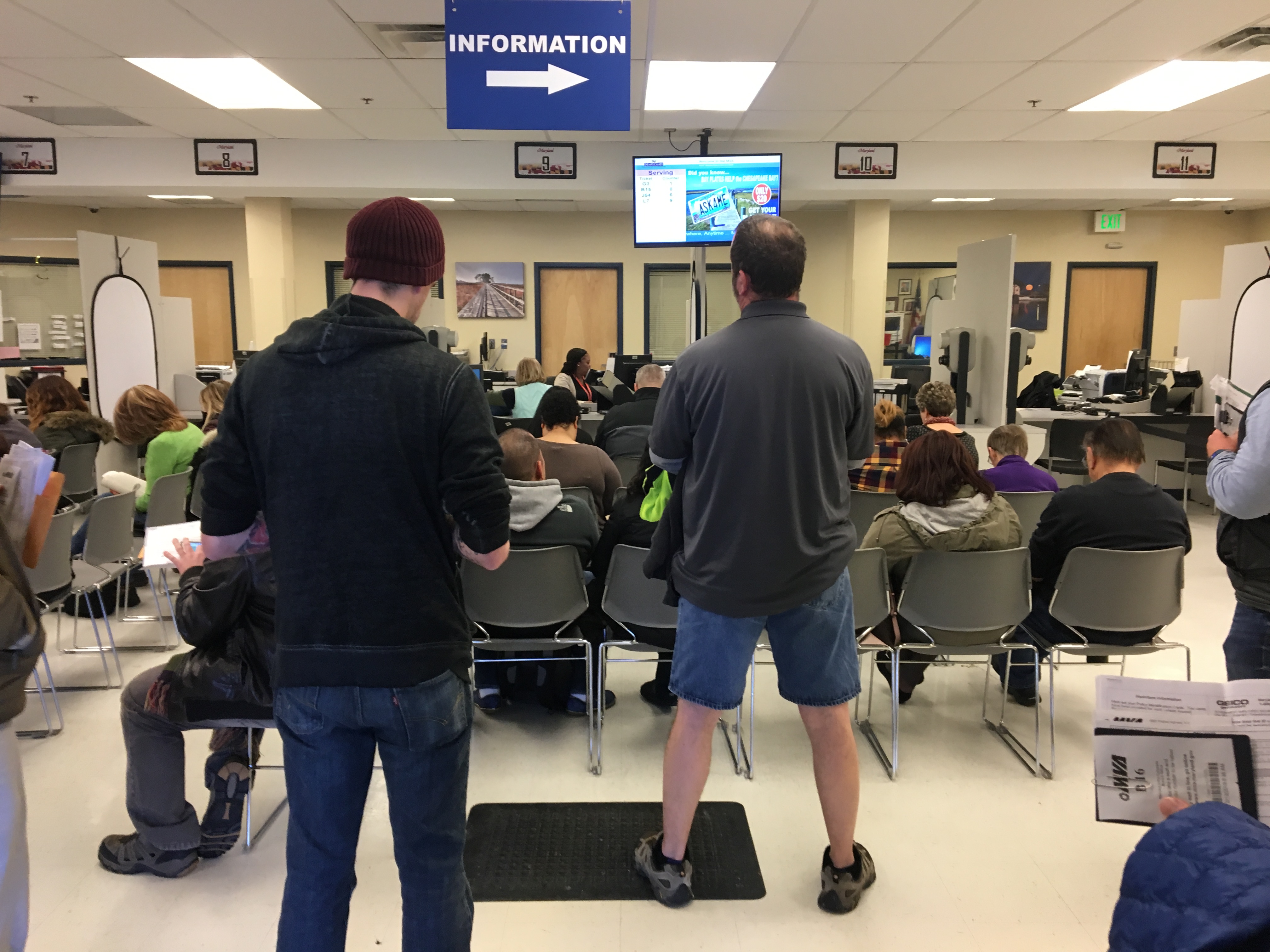



Recent Comments